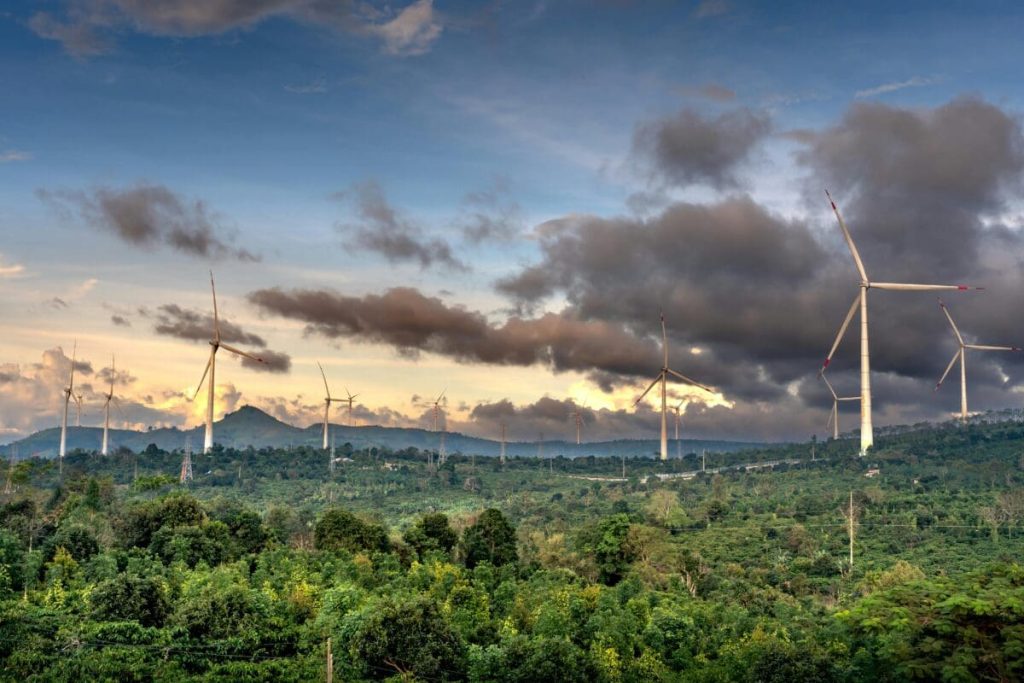
The impact of climate change is currently playing out in real time. The weather has become more erratic as natural disasters have become more extreme; the in-between seasons seem to be slipping away, with many communities experiencing extreme summers and winters without the transition of spring and fall temperatures. It’s clear that the time for carbon action is now, and carbon offsets will continue to be a pivotal piece of addressing the impact of climate change around the world.
What Are Carbon Offsets?
Carbon offsets are defined as a set of intentional actions designed to minimize greenhouse gases. According to Constellation, carbon offsets are actions that individuals as well as large organizations can take as part of a carbon action strategy, differing from carbon credits, which are only available to businesses and governments.
Setting carbon offsets apart from other carbon action items is the fact that anyone can do their part in reducing emissions and eliminating greenhouse gases from the atmosphere. An individual who decides to plant a tree is participating in offsetting, as is a large corporation investing in renewable energy.
Why Is It Good to Offset Carbon?
Offsetting emissions allows you to take an active role in achieving carbon neutrality. Every individual action has an impact on the environment, but there are steps that humans and organizations can take to reduce their carbon footprint. Carbon offsets are a proactive approach to carbon action, and carbon offset projects can help compensate for emissions created in other areas. By maximizing your use of carbon offsets, you can strive to shrink your overall footprint and ensure that measures are in place to help reduce emissions.
What Is Carbon Neutrality?
According to United Nations Climate Change, carbon neutrality is defined as the process of reducing emissions through climate action in order to ensure there is no impact on the local, regional or global climate system. An individual or organization only achieves carbon neutrality when their emissions are at zero — meaning that they do not add any net value of greenhouse gases or carbon emissions to the atmosphere.
Businesses and Countries Aiming for Carbon Neutrality
Across the globe, corporations and government leaders are working together to achieve climate neutrality. According to the National Public Utilities Council, 137 countries have committed to achieving carbon neutrality, many of which have a goal of reaching carbon neutrality by 2050. In fact, Bhutan and Suriname have already achieved carbon neutrality, and the following countries have the most aggressive approaches to becoming carbon-neutral:
- Denmark
- France
- Hungary
- New Zealand
- Sweden
- United Kingdom
The United States, as one of the largest carbon emitters in the world, has developed official policy outlining carbon-neutral targets — but there are currently no laws in place regarding carbon neutrality.
In addition to the governmental leaders and departments working to offset carbon and achieve carbon neutrality, several large organizations and corporations also have carbon neutrality targets they are working toward. According to Sustainability Magazine, the companies most focused on achieving carbon neutrality include:
- Disney
- Microsoft
- General Motors
- JetBlue
- Honeywell
- Shell
The Benefits of Carbon Offset Projects
Carbon offset projects are defined by Encyclopædia Britannica as those that work to reduce or remove carbon emissions from the atmosphere. Regardless of their scale or scope, these undertakings can have a considerable impact on offsetting emissions generated by other activities. Below are some of the most significant benefits of carbon offset projects:
Contributes to Achieving Carbon Neutrality
Carbon neutrality can only be achieved when net carbon emissions are at zero. In today’s globalized and industrialized world, it would be impossible to achieve carbon neutrality without carbon offset projects, which are intentional actions that help remove emissions from the atmosphere. The goal of any carbon offset project is to reduce carbon at the same rate that carbon is emitted in another area, ultimately achieving the coveted net-zero status.
Contributes to Long-Term Sustainability Goals
Individuals who have identified long-term sustainability goals and organizations actively working to achieve carbon neutrality will find that carbon offset projects are an excellent way to take small steps toward their larger goals. Carbon action is a long-term strategy, and it’s important to identify actionable measures that can be taken now to keep making progress on the long-term sustainability goals that have been outlined.
Creates New Economic Opportunities for Local Communities
Carbon offset projects tend to be often innovative and inspiring ventures that can both help improve the environment as well as enhance the local economy. In local areas heavily impacted by climate change, carbon offset projects can provide job opportunities and local revenue, in turn expanding the overarching benefits of these sustainability initiatives.
Supports Business Growth and Development
Contemporary consumers are more conscientious than ever before, with many individuals looking to support businesses that are actively working to reduce their carbon footprints. Working to offset emissions, organizational leaders can grow their businesses in surprising ways through not only carbon offset projects themselves but also reaching that desired demographic of consumers.
Improves Brand Image
While it may not be the primary reason that organizations invest in carbon offset projects, companies committed to sustainability efforts often find that their brand image organically improves over time. In the modern era, as consumers begin to recognize the signs and impact of climate change globally, they are becoming more aware of the organizations working to reduce emissions and achieve carbon neutrality.
Promotes Corporate Social Responsibility
Corporate social responsibility, commonly referred to as CSR, is defined by Investopedia as a business strategy where an organization takes steps to hold itself accountable for its actions. CSR requires a business to be aware of the impact it has on society at large — so, naturally, carbon offset projects help support any CSR strategies in place at an organization. Four core categories exist within CSR strategies:
- Environmental impacts
- Ethical responsibility
- Philanthropic endeavors
- Financial responsibility
By investing in carbon offsets, organizations are fulfilling commitments outlined within the environmental impact category.
Allows Organizations to Meet Regulatory Requirements
As governmental leaders continue working to achieve carbon neutrality, an increasing number of regulatory requirements are being placed on organizations regarding their carbon emissions. Through carbon offset projects, organizations can maintain adherence to regulatory requirements while actively working to compensate for emissions being produced elsewhere.
Types of Carbon Offset Projects
Organizations invest in carbon offset projects that help them compensate for greenhouse gas emissions released elsewhere, allowing the business to reduce the size of their carbon footprint. Carbon offset projects play a central role in helping an organization — regardless of size or industry — achieve carbon neutrality.
A few of the most common types of carbon offset projects include:
Renewable Energy
Renewable energy carbon offset projects are carbon action projects focused on investing in renewable energy resources and reducing dependence on fossil fuels. For example, a company might decide to invest in wind energy in order to decrease its dependence on coal-powered plants.
Reforestation
Reforestation carbon offset projects focus on increasing the number of trees in a forest or preserving a forested area, thereby improving the absorption rate of carbon that is released into the atmosphere. Reforestation projects can be done on a small or large scale and are considered to be highly impactful.
Carbon Capture
Carbon capture projects are becoming more common, particularly among large organizations that generate a substantial amount of carbon emissions. According to the National Grid, carbon capture projects involve capturing the carbon created through industrial projects and subsequently storing it deep underground so that it is not released into the atmosphere.
The Future of Carbon Offsets
Carbon offsets will continue to be key to climate action, especially as individuals, organizations and governmental leaders from around the world aspire to achieve carbon neutrality. Achieving the climate goals businesses and countries have outlined will not be possible without collaborative efforts in the private and public sectors. As more people become aware of the power of carbon offset projects and the simple ways they can help offset emissions, it will become easier to reach the large-scale climate goals in place.
Offsetting emissions is something that anyone can do, no matter their age, skill level or location. By becoming aware of the carbon offset projects occurring in your community and learning more about the sustainable practices you could adopt, it is possible to assume an active role in achieving carbon neutrality.
Explore the Role of Carbon Offsets in the Travel Industry at Unity Environmental University
Offsetting emissions will remain a priority in the travel sector in the years ahead — particularly as tourist organizations and travel businesses collaborate to address the impact of climate change. At Unity Environmental University, we offer a Sustainable Master of Business Administration in Sustainable Tourism and Hospitality degree program that allows students to develop an advanced understanding of what it takes to provide a net-positive travel experience. Request more information about our environmental degree programs today.



